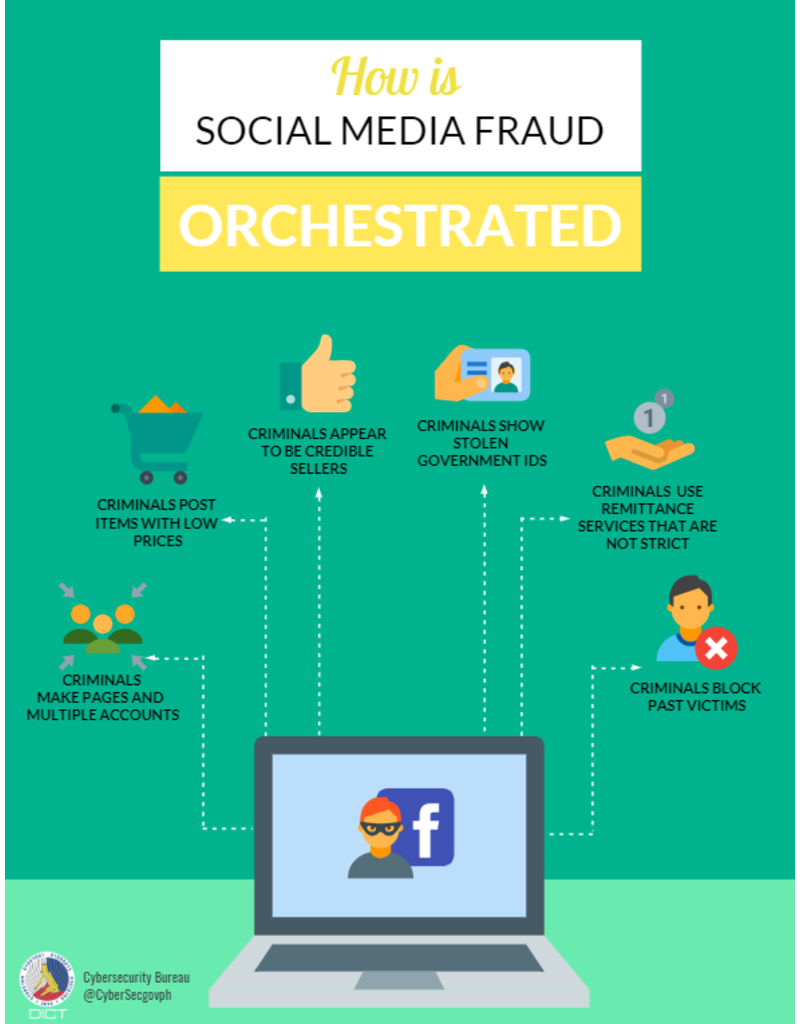Since the start of 2018, Internet Fraud has been in the top of our Cybercrime Statistics Reports proving that it has become more and more prevalent. Internet fraud is the act of defrauding people of their money through internet services. This type of fraud can happen in a variety of ways. One of the growing trends on how it occurs is through the use of social media.
Social media such as Facebook, Twitter, Instagram, and the like have become great tools to connect with people at a low cost. However, fraudsters also utilize the same platforms and turned it into shady avenues to trick and fool people of their money and identities.
To ensure you won’t fall prey to any online scams, we will enlighten you on the typical process on how social media particularly Facebook is used for buy and sell scam or fraud.

• Cybercriminals pose as both buyers and sellers.
Scammers create multiple fake accounts with stolen photos and information. They also create pages and invest in promoting for likes. These pages may appear as genuine accounts.
• Cybercriminals post items with low prices.
Scammers will post fake advertisements offering products such as branded items or gadgets which are typically non-existent for low prices. Buyers will be lured and spot these ads which look like a good deal, so they contact the seller.
• Cybercriminals’ other fake accounts will pretend as buyers to their seller account’s posts.
Bogus buyers who are also the scammers will comment on the seller’s posts to build up the interest on the items on sale. The scammer’s account acting as the seller will be posting thank you messages from their fake buyers accounts. They will show positive testimonials with different dates from these bogus accounts in order to appear as reputable sellers.
• Cybercriminals use remittance services that are not strict when claiming money.
Once the victim has fallen into the trap of buying an item, cybercriminals will require him to pay thru remittance services. Some remittance services do not have strict procedures when it comes to claiming money. For instance, a remittance service will only need the reference number from the sender in order to acquire the money without verifying the identity of the claimant. With that said, this can easily be used by fraudsters leaving no trace of his/her real identity.
• Cybercriminals show images of government issued IDs from other netizens who share these images.
Another method of how cybercriminals make his online identity believable and credible is by displaying government issued IDs which they have actually stolen online. This entails another case of internet fraud which is called identity theft.
• Cybercriminal make sure his Facebook account will continue to look active.
These scammers will fool you into believing they are trustworthy by continuously posting items on sale. As soon as they received the payment, scammers will block their victims. They will delete and ban any negative posts in order to have overwhelmingly positive feedback rating.
How to Protect Yourself
• Avoid deals involving shipping if not sure. Meet the seller in public places and see the item before purchasing.
• Conduct extensive search online about the Facebook page or profile for negative testimonials.
• Be cautious on branded items and gadgets being sold online for a low price.
• Be wary of posting your government issued IDs as these may be stolen and used for scams.
• Ask your peers if they have experience in transacting with the same seller to ensure he/she is reliable.
• You may require the seller to communicate thru video chat to verify his identity. For example, he may present his government IDs beside his face to guarantee all his credentials are true. Try to request unique movements from the buyer during the video call to ensure it is not a recorded video.
• Call an anti-cybercrime office located in your area if you feel suspicious about your transactions.
